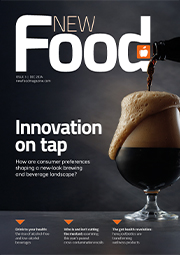Analysis of acrylamide in potato chips by isotopically standard addition UHPLC-MS/MS
- Like
- Digg
- Del
- Tumblr
- VKontakte
- Buffer
- Love This
- Odnoklassniki
- Meneame
- Blogger
- Amazon
- Yahoo Mail
- Gmail
- AOL
- Newsvine
- HackerNews
- Evernote
- MySpace
- Mail.ru
- Viadeo
- Line
- Comments
- Yummly
- SMS
- Viber
- Telegram
- Subscribe
- Skype
- Facebook Messenger
- Kakao
- LiveJournal
- Yammer
- Edgar
- Fintel
- Mix
- Instapaper
- Copy Link
Posted: 27 September 2018 | PerkinElmer Inc. | No comments yet
Acrylamide is an amide-type organic compound that can be formed by cooking or processing food at elevated temperatures (especially starch-rich compounds such as potatoes and cereals)…
Acrylamide is formed mainly in food by the reaction of the aminoacid asparagine with reducing sugars (particularly glucose and fructose) as part of the Maillard reaction. It can also be formed by reactions containing 3-aminopropionamide. The formation of acrylamide occurs mainly in conditions of high temperatures (generally higher than 120 °C) and low humidity.
Acrylamide is classified as “probable carcinogen to humans” (Group 2A) by the International Agency for Research on Cancer (IARC), based on animal studies. At this time, it is not clear that these results can be extrapolated to humans.
The rest of this content is restricted - login or subscribe free to access


Why subscribe? Join our growing community of thousands of industry professionals and gain access to:
- bi-monthly issues in print and/or digital format
- case studies, whitepapers, webinars and industry-leading content
- breaking news and features
- our extensive online archive of thousands of articles and years of past issues
- ...And it's all free!
Click here to Subscribe today Login here
Related content from this organisation
- Plant-Based Food Revolution: leveraging ICP-MS for quality assurance and nutritional insights
- Application Brief: Solus One Salmonella for Raw Poultry and Meat
- Guide: Solus One Salmonella methodology – Seven easy steps
- Featured Partnership: Challenges in meat pathogen detection – improving your food safety plan
- Poster and Podcast: Rapid recovery and detection of pathogenic Gram-negative organisms










